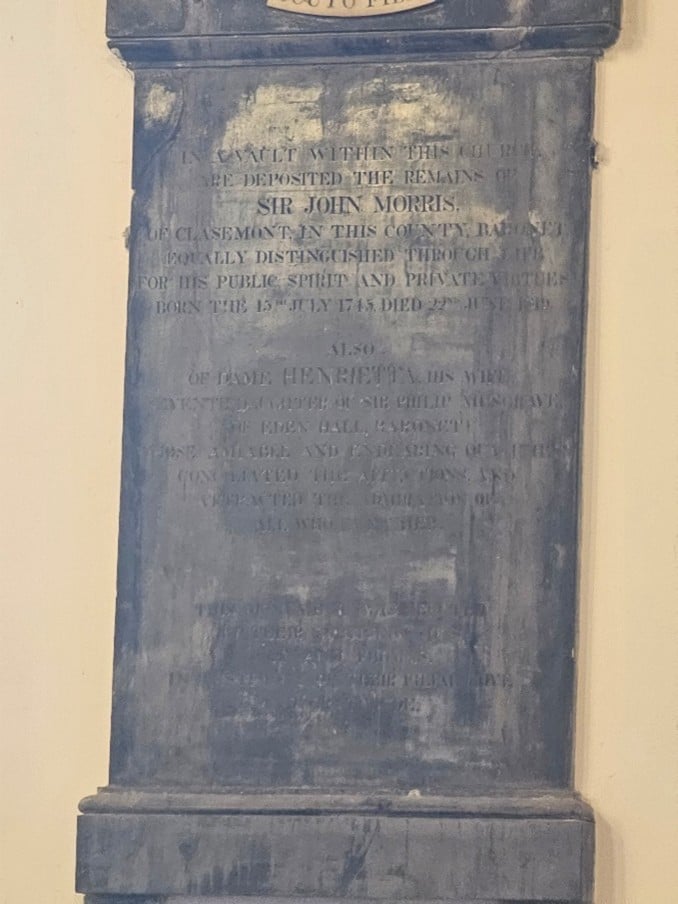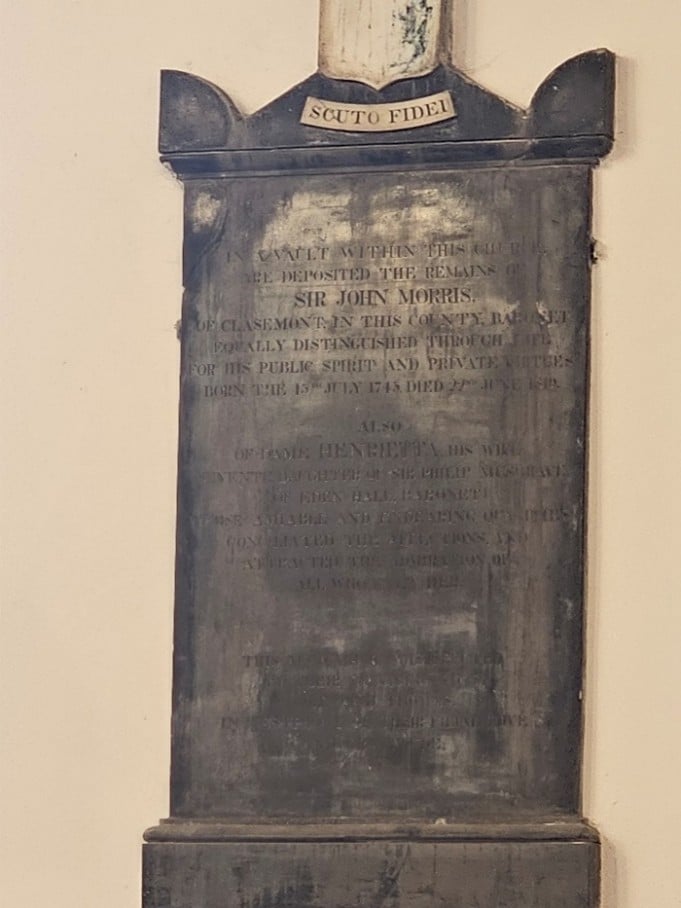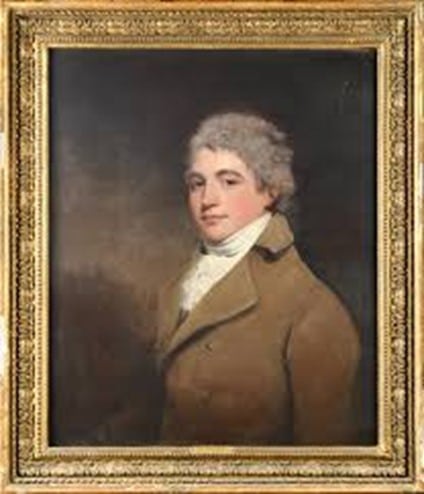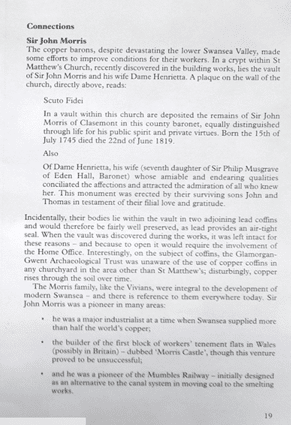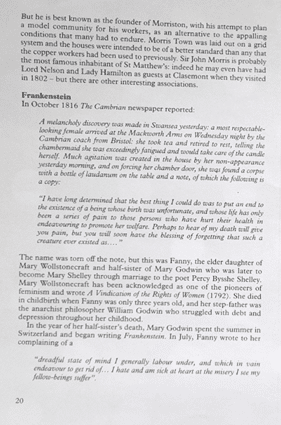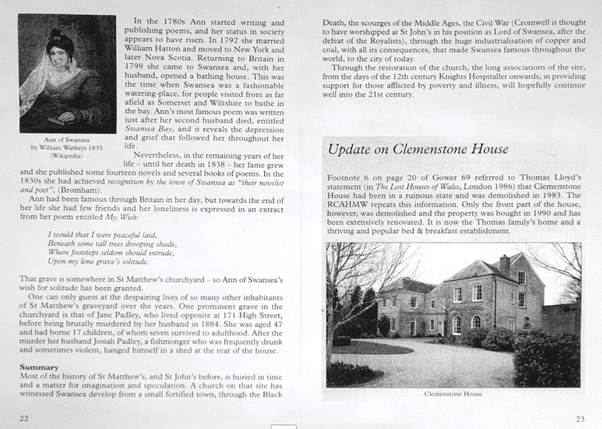Sir John Morris & Copperopolis
Swansea’s Industrial Ascent and the Legacy Beneath St. Matthew’s Church
The transformation of Swansea into “Copperopolis” during the 18th and 19th centuries was one of the most profound industrial evolutions in Wales — and at its centre was Sir John Morris, 1st Baronet (1745–1819). An industrialist, urban planner, and transport pioneer, Morris played a decisive role in the rise of Swansea as the global capital of copper production.
Swansea: A Natural Furnace
Swansea’s geographic advantages laid the foundation for its industrial destiny. With Cornwall’s copper ore easily imported by sea and abundant coal reserves in the Tawe Valley nearby, Swansea became the ideal hub for copper smelting. The copper industry thrived particularly in the Lower Swansea Valley, where by 1823, nine copper works operated in the area. Swansea supplied over 70% of the world’s copper, giving rise to its nickname “Copperopolis.”
Sir John Morris: Industrial Visionary
Sir John Morris was instrumental in this transformation. Building on his family’s existing copper and coal ventures, Morris expanded their operations and reshaped Swansea’s urban landscape. In 1768, he founded Morriston, one of the earliest planned industrial villages in Britain. This development housed workers near their places of employment, with access to chapels, markets, and green space. It was a social and architectural innovation that influenced later industrial communities, including Port Sunlight and Bournville.
Towering above this village, Morris Castle — a pioneering form of early workers’ housing — still stands as a ruin on Trewyddfa Hill above Landore. Though intended to reflect social responsibility, the cramped castle also illustrates the challenges of mass worker housing in an age of rapid industrial expansion.
Revolution on Rails: The Swansea and Mumbles Railway
Morris’s vision also extended to transport. In 1804, he played a role in developing the Oystermouth Railway — later known as the Swansea and Mumbles Railway. Though initially built for coal transport, it became the world’s first passenger railway, marking a major innovation in public transit. It helped boost Swansea’s economy by improving access between the town, industry, and surrounding communities.
Burial and Commemoration at St Matthew’s Church
Upon his death in 1819, Sir John Morris was interred in a family crypt beneath St Matthew’s Church (formerly St John-juxta-Swansea), alongside his wife Henrietta Morris (née Musgrave). A large dark monument still stands on the south wall of the main hall of the church. The inscription reads:
In a vault within this church are deposited the remains of Sir John Morris of Clasemont in this county baronet equally distinguished through life for his public spirit and private virtues born the 15th July 1745 died 22nd June 1819
Also of Dame Henrietta his wife (seventh daughter of Sir Philip Musgrave of Eden Hall baronet) whose amiable and endearing qualities conciliated the affections and attracted the admiration of all who knew her
This monument was erected by their surviving sons John and Thomas in testimony of their final love and gratitude.

